
Eric Arthur Blair, better known by his pen name George Orwell, was an English novelist, essayist, journalist, and critic. His work is characterised by lucid prose, social criticism, opposition to totalitarianism, and support of democratic socialism.
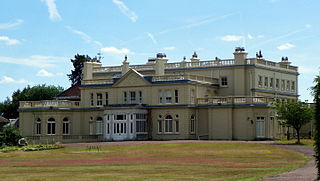
Childwickbury Manor is a manor house in the hamlet of Childwickbury, Hertfordshire, England, between St Albans and Harpenden.
Eileen Maud Blair was the first wife of George Orwell. During World War II, she worked for the Censorship Department of the Ministry of Information in London and the Ministry of Food.

Aldbury is a village and civil parish in Hertfordshire, England, near the borders of Bedfordshire and Buckinghamshire in the Bulbourne valley close to Ashridge Park. The nearest town is Tring. Uphill from the narrow valley are the Bridgewater monument and the Ashridge estate. It is noted for its picturesque setting and has been referred to as a "chocolate-box" village due to its traditional appearance.
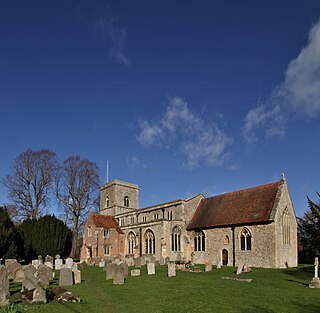
Sutton Courtenay is a village and civil parish on the River Thames 2 miles (3 km) south of Abingdon-on-Thames and 3 miles (5 km) northwest of Didcot. Historically part of Berkshire, it has been administered as part of Oxfordshire since the 1974 boundary changes. The 2011 census recorded the parish's population as 2,421. Sutton Courtenay is home to some important structures, such as The Abbey, the Manor House, All Saints' Church, a twelfth-century Norman hall, the Sutton Bridge, and Didcot power station.
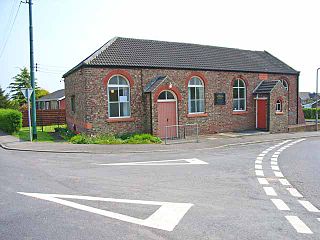
Carlton is a village and civil parish within the borough of Stockton-on-Tees and ceremonial county of County Durham, England. The population of the civil parish taken at the 2011 census was 726. It is situated a few miles to the north-west of Stockton-on-Tees, a short distance from the village of Redmarshall.
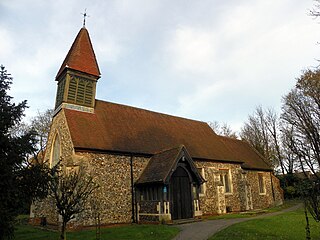
Shephall is a neighbourhood of the new town of Stevenage in Hertfordshire. It was formerly a separate village and parish, being absorbed into Stevenage in 1953.

Abbots Langley is a large village and civil parish in the English county of Hertfordshire. It is an old settlement and is mentioned in the Domesday Book. Economically the village is closely linked to Watford and was formerly part of the Watford Rural District. Since 1974 it has been included in the Three Rivers district.
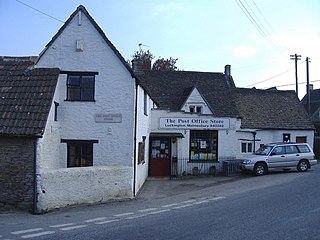
Luckington is a village and civil parish in the southern Cotswolds, in north-west Wiltshire, England, about 6+1⁄2 miles (10 km) west of Malmesbury. The village is on the B4040 road linking Malmesbury and Chipping Sodbury. The parish is on the county border with Gloucestershire and includes the village of Alderton and the hamlet of Brook End.

Chipperfield is a village and civil parish in the Dacorum district of Hertfordshire, England, approximately five miles southwest of Hemel Hempstead and five miles north of Watford. It stands on a chalk plateau at the edge of the Chiltern Hills, between 130 and 160 metres above sea level.

Ardeley is a small village and civil parish in East Hertfordshire, England. The parish includes the hamlet of Cromer, as well as Wood End and Moor Green.

Bentworth is a village and civil parish in the East Hampshire district of Hampshire, England. The nearest town is Alton, which lies about 3 miles (5 km) east of the village. The parish covers an area of 3,763 acres (15.23 km2) and at its highest point is King's Hill, 716 feet (218 m) above sea level. According to the 2011 census, Bentworth had a population of 553. It lies on the edge of the East Hampshire Hangers.

Woolmer Green is a small village and civil parish in Hertfordshire, England. The 2011 census figure for the population is 661 people.

Stapleford Abbotts is a village and civil parish in the Epping Forest district of Essex, approximately 5.5 mi (9 km) SW of Ongar, 4.5 mi (7 km) N of Romford and 5 mi (8 km) SSE of Epping. The whole parish is within the M25 motorway. The village covers 957 hectares and had a population of 959 in 2001, increasing to 1,008 at the 2011 Census.
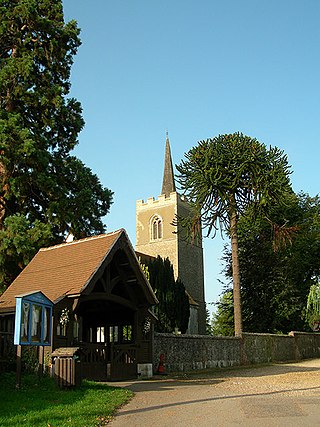
Thorley is a village and civil parish in Bishops Stortford, East Hertfordshire district of Hertfordshire, England. The parish includes the hamlets of Thorley Street, Thorley Wash and Old Thorley, and is bordered at the north by the market town of Bishop's Stortford.

Willingdon and Jevington is one of the civil parishes in the Wealden District of East Sussex, England. The two villages lie one mile (1.6 km) south of Polegate. Willingdon is part of the built-up area which is Eastbourne, and lies on the main A22 road, whilst Jevington is on a minor road leading to Friston. The civil parish was formed on 1 April 1999 from "Jevington" and "Willingdon" parishes. In addition under the name of Willingdon it is also an electoral ward.
"A Good Word for the Vicar of Bray" is an essay by the English author George Orwell. In it Orwell encourages the public-spirited action of planting trees, which may well make up for the harm people do in their lives. The essay was first published in Tribune on 26 April 1946.

Hardwick is a village in the civil parish of Hardwick with Tusmore about 4.5 miles (7 km) north of Bicester in Oxfordshire.

Cottisford is a village and civil parish in Oxfordshire, about 3.5 miles (5.6 km) south of Brackley in neighbouring Northamptonshire. The parish's northern and northwestern boundaries form part of the boundary between the two counties. The parish includes the hamlet of Juniper Hill about 1 mile (1.6 km) northwest of Cottisford. The 2011 Census recorded the parish's population as 216.

The Church of St Nicholas in Norton in Hertfordshire is the parish church for what was originally the village of Norton but which today has become a suburb of Letchworth Garden City. The present building dates from about 1109 to 1119, with additions in the 15th century including the tower. Before the Reformation it was a stopping point on the pilgrim route to the Abbey of St Albans and the shrine there.























